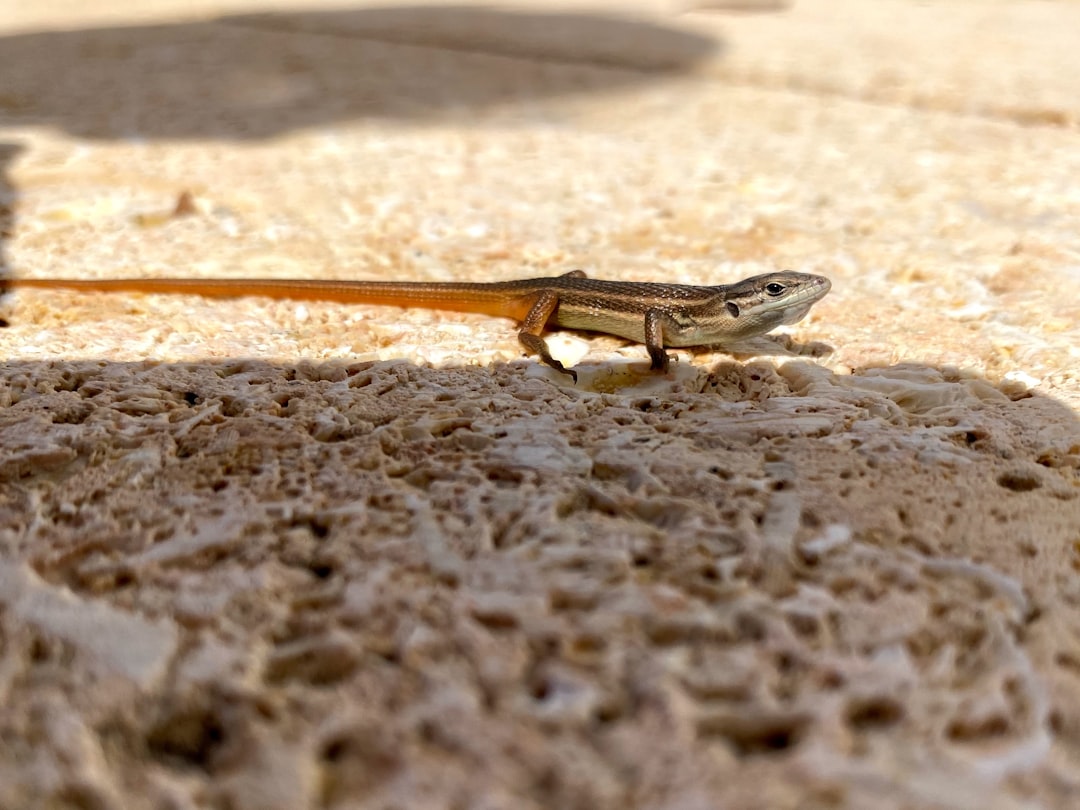What is it about?
This study provides the first basic descriptions and comparisons of how the elbow, radioulnar (forearm bones), and wrist joints of therian (marsupial and placental mammals) and nontherian tetrapods (four-legged animals) operate during locomotion. Fleshed and defleshed alligators (an example of a nontherian tetrapod with forelimb postures and gaits considered to be comparable to extinct “mammal-like reptiles”) and opossums (a mammal considered to represent the basic forelimb posture and locomotion of therians) were physically manipulated to simulate forelimb retraction. These results were compared and contrasted with manipulations of the bones of specimens representative of a variety of extinct and extant tetrapods. Surprisingly, the movements at these joints were found to be the exact opposite of what occurs if you grab an animal’s forearm and twist it in a bipedal stance. These results were used to re-evaluate the arboreal versus terrestrial origins debate for therians (a debate which dates back to Darwin's time), and shed light on the origins of our own enhanced ability to manipulate objects. We use our results to argue that the old chameleon convergence hypothesis (the idea that the large number of similarities between chameleon and mammal forelimbs indicates that mammals used to live in trees) should be reconsidered. Thus, we propose that an evolutionary stage in a chameleon-like setting preceded or enabled the evolution of therian forearm pronation/supination.
Featured Image
Why is it important?
Because of the confusion and misconceptions associated with research on the forearm, studies of this type have the potential to shed a great deal of light on the postural and locomotor evolution of many different groups of tetrapods. For example, an increasing number of mammalian fossils from the Mesozoic era (Triassic, Jurassic, and Cretaceous periods) are argued to have been adapted for life in the trees. However, past warnings that arboreal adaptations for chameleon-like locomotion on narrow branches (funambulism) are readily separated from more generalized adaptations for arboreal broad surface locomotion (on branches wider than bodily width) have been overlooked. What has been missing is an unequivocal osteological adaptation that signifies arboreality. This study is important because we note that the unique convergence upon fully pronated forearms (mechanically aligned wrist/elbow joints) in therians and chameleons may provide the clearest indication yet that therians passed through an arboreal stage early in their evolution. The idea that the large number of postural and locomotor forelimb traits shared by therians and chameleons is indicative of an arboreal therian past has been around for a long time. Chameleons are hypothesized to have evolved full pronation to facilitate stable funambulism, a type of locomotion which they are more specialized for than any other tetrapod. The growing number of stem therian fossils can help test the chameleon convergence hypothesis by offering clues as to when full pronation evolved. The ability of therians to actively pronate/supinate their forearm bones may also have evolved around the same time. In this study we tabulated the osteological adaptations traditionally associated with this type of mobility, and provided the first evaluation of their relative importance to the evolution of therian-grade forearm mobility. Additionally, this evaluation may explain why dinosaurs did not evolve chameleon- or therian-like forearms, because the ancestors of dinosaurs did not pass through a chameleon-like evolutionary stage in the trees. Future studies will continue to explore and apply this information to the postural and locomotor evolution of dinosaurs and other archosaurs.
Perspectives
This study reported on the quadrupedal aspect of Hutson and Hutson's (2015b) study of forearm bone mobility, and continued to apply Johann M. F. Landsmeer's (1981, 1983, 1984, 1990) work. Landsmeer's work showed the importance of understanding locomotor adaptations and their evolution from a "ground up" perspective. Here, this perspective revealed that forearm bone movements in therians like us ultimately stemmed from adaptations to alleviate twisting motions as the forelimb moves against a firmly placed hand. This publication also continued to describe the findings of my (JDH) research on the structure, function, and origins of tetrapod forearm pronation. Yet, again, most of the traditional assumptions inherent to forearm research were not supported. For example, all four previously published investigations of the evolution of therian elbow, radioulnar, and wrist joint movements were primarily undertaken from a bipedal perspective. But, the vast majority of therian or nontherian forelimbs are adapted for quadrupedal locomotion. Thus, twisting tetrapod forearm bones in a bipedal stance has provided false imitations of human-like forearm bone movements that few, if any, quadrupedal tetrapods are capable of undertaking.
Joel David Hutson
DePaul University
Read the Original
This page is a summary of: An Investigation of the Locomotor Function of Therian Forearm Pronation Provides Renewed Support for an Arboreal, Chameleon-like Evolutionary Stage, Journal of Mammalian Evolution, June 2016, Springer Science + Business Media,
DOI: 10.1007/s10914-016-9341-1.
You can read the full text:
Contributors
The following have contributed to this page










